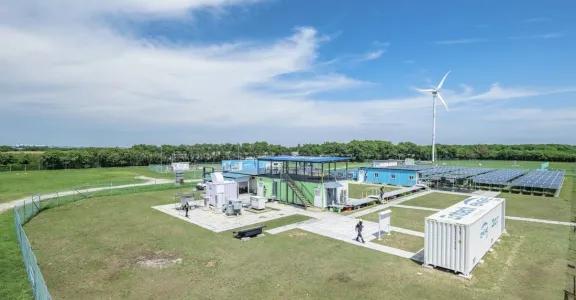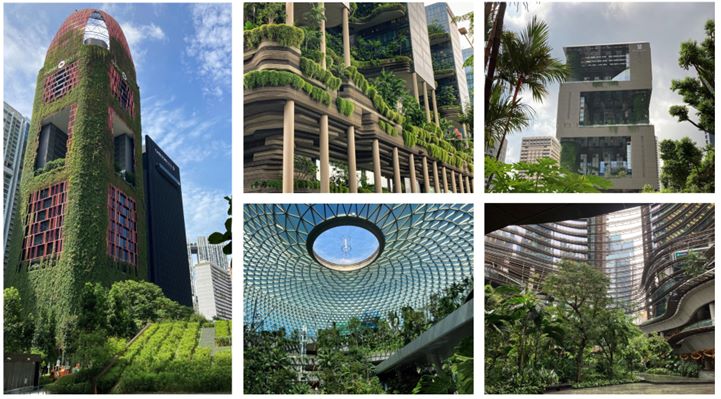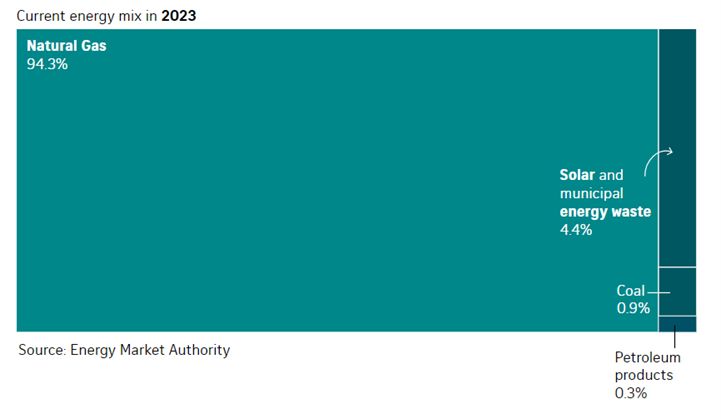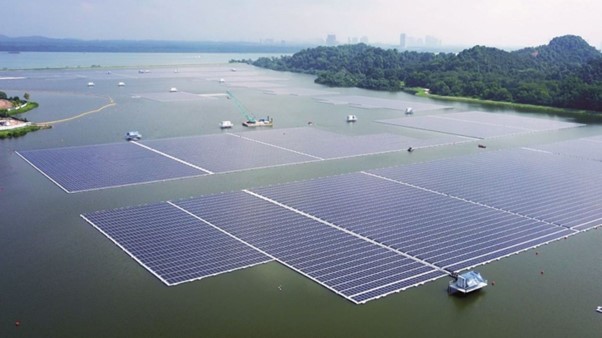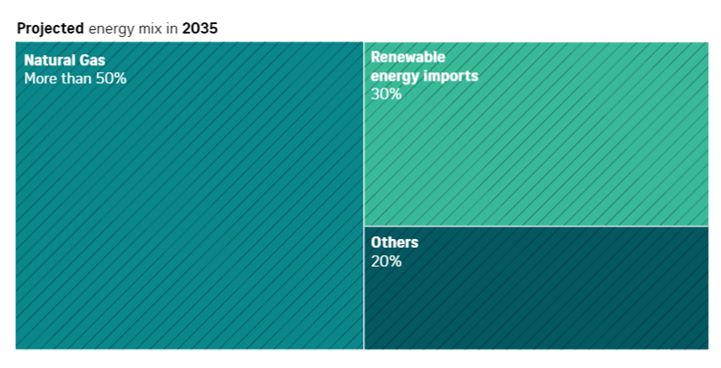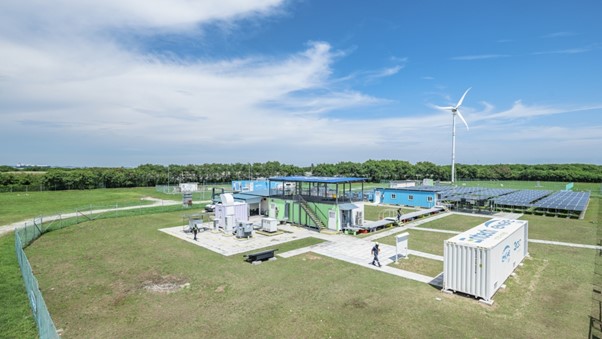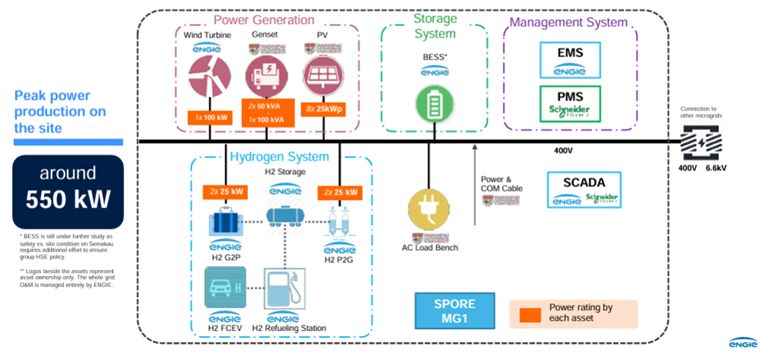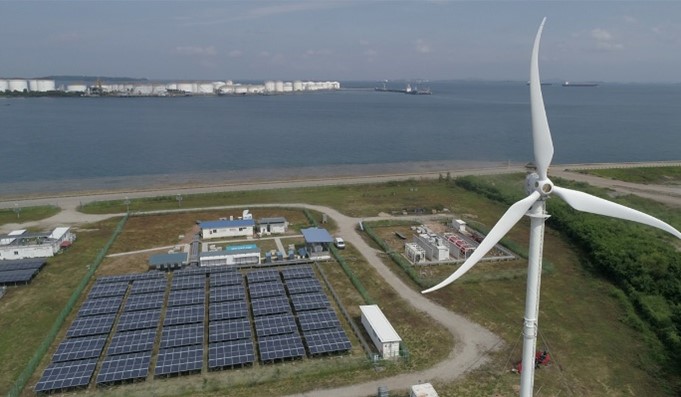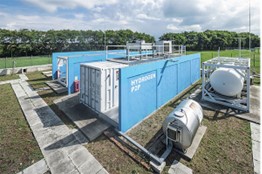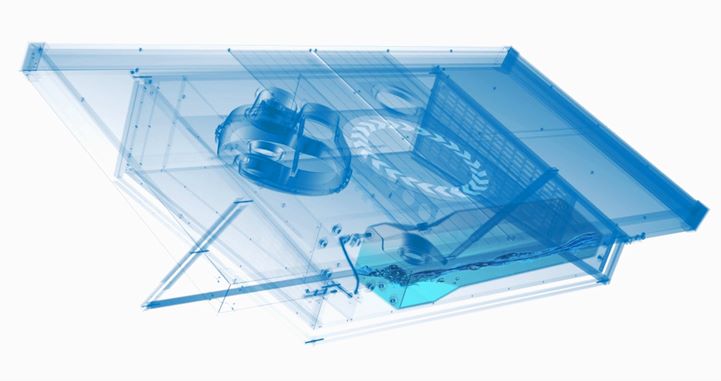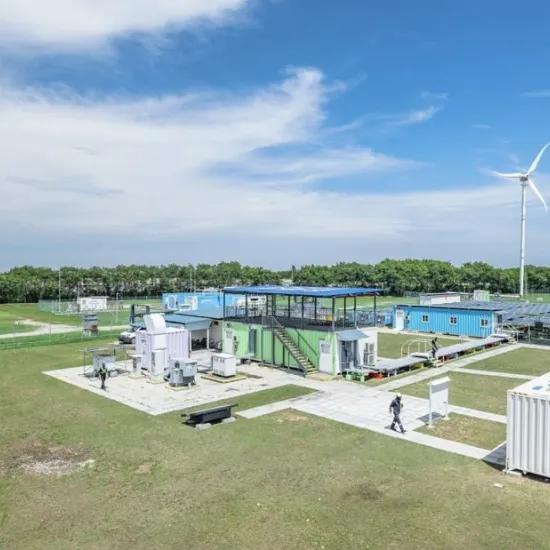Review on IERE General Meeting and Singapore Forum 2023
From 21 to 24 November 2023 the 23rd IERE General Meeting and Singapore Forum, co-hosted by Engie, took place in Singapore. Its main topic was "Accelerating the Carbon-Neutral Energy Transition for Industry and Territories". Pieter Jan Jordaens, Sirris expert in energy transition, was present, both as a speaker and a participant. In this article we discuss the case of Singapore, a small country facing several substantial energy challenges.
In a short series of articles, our expert Pieter Jan Jordaens highlights some of the most interesting findings relevant to learn from in respect to market opportunities abroad and as an inspiration for our own regions. After an overview of the key findings, we now take a closer look at the host country of the conference: Singapore.
Necessary transition vs. immense challenges
Despite the increasing complexity and unpredictability of global political and economic conditions, it is imperative to expedite our journey toward carbon neutrality. Renewable energy technologies stand as pivotal elements in this pursuit. The shift in energy is a crucial step towards achieving net-zero carbon emissions by the latter half of this century. Central to this transition is the imperative to eradicate and diminish CO2 emissions originating from energy sources to mitigate the impacts of climate change. Leveraging renewable energy and implementing energy efficiency measures holds the potential to accomplish up to 90 % of the necessary carbon reductions.
However, not every country enjoys the same advantages when it comes to available renewable resources and numerous challenges confront the widespread adoption of renewable energy, including intermittency in power generation and the disparity between energy availability and population centres. Singapore, the host country of the conference, has already been making huge efforts while being confronted with many substantial challenges.
The case of Singapore
As a country (city-state), Singapore has been at the forefront of pioneering green architecture and green spaces, setting new standards for sustainability and environmental design. The city's skyline is adorned with innovative buildings that integrate nature-inclusive designs and are adapted with eco-friendly features and technologies. This gives the city a green image, but on the other hand, in respect to its energy mix and decarbonisation strategy, Singapore has some major challenges to deal with. Singapore also has high cooling needs due to high temperature and high humidity as environmental conditions.
About 40 % of Singapore’s greenhouse gas emissions now come from the power sector. Singapore's energy mix primarily relies on natural gas (94.3 %), which accounts for the largest share of its energy consumption. In recent years, Singapore has been diversifying its energy sources to include solar power, which is increasingly being integrated into its energy grid. However, a small country such as Singapore, with little available space, has to deal with several challenges to install large solar power plants. Additionally, Singapore imports a portion of its electricity from neighbouring countries such as Malaysia (whose energy mix also is mainly fossil-based), and is exploring various renewable energy options to reduce its reliance on fossil fuels.
Finding alternatives is not an easy task for the country:
- Singapore has low average wind speeds (2 m/s) and lacks adequate land and offshore space, which means (offshore) wind energy is not a valid option in comparison with most other countries in the world.
- It has a narrow tidal range (i.e. high tide vs. low ride) of 1.7 m, which means no tidal energy harvesting possibilities.
- Nuclear safety and disposal are issues due to country size and land scarcity.
- Singapore has no significant surface geothermal source
Solar remains the most viable renewable energy option for Singapore. In respect to adopting new energy technologies, the country is adopting floating solar power for example, to tackle the land scarcity issue. It recently installed one of the world’s largest floating solar farms (60 MWp) on a nearshore water reservoir. Singapore aims is to have 2 GWp of solar energy deployment by 2030. However, solar energy is intermittent by nature and subjected to weather conditions, and for grid stability purpose additional storage units will also need to be installed.
Singapore inaugurated a 285-MWh energy storage system (ESS) on Jurong Island in February 2023, marking it as the largest ESS in Southeast Asia.
In a thrive to reduce natural gas from the current 94.3 % to more than 50 %, renewable energy imports will be key. Some 30 % is expected to come from renewable energy imports from neighbouring countries, such as Indonesia, the Philippines, Vietnam and Cambodia. Import of green molecules, but also HVDC lines, to transport electricity are envisioned. The remaining 20 % could encompass additional (offshore or building integrated) solar energy, diverse types of hydrogen, bio- and e-fuels, and nuclear power energy sources.
Innovation in progress: Engie’s REIDS-SPORE R&D platform
Engie wants to be a leader in the energy transitions. Currently it has around 96.400 employees worldwide divided in four global business units: Renewables, Energy Solutions, Flex Gen & Retail and Networks. Engie’s aim is to grow the renewables capacity towards 50 GW by 2025 and 80 GW by 2030.
Innovation and research are key to reach these ambitions, but Engie is not a technology developer. Engie Research partners up with technology developers, preferably in an early stage, in order to understand new promising technologies a little bit better and earlier than others, and to de-risk these technologies to have more competitive business units and win tenders. One of the investments to do so is Engie’s REIDS-SPORE R&D platform in Singapore, which promotes innovative technologies contributing to a carbon neutral economy. The Renewable Energy Integration Demonstrator-Singapore (REIDS SPORE) is a cutting-edge 15 million USD initiative showcasing and demonstrating different sustainable energy solutions. It aims to integrate various renewable energy sources, such as solar, wind, and storage technologies into Singapore's power grid.
Through innovative experiments and collaborations, REIDS SPORE focuses on testing and demonstrating the viability and scalability of these renewable energy systems in an urban setting.
Engie, along with its partners, aims to pave the way for a more sustainable and resilient energy future in Singapore and beyond. The REIDS-SPORE microgrid serves as a multifaceted hub, functioning not only as an active living laboratory and R&D test site, but also as an educational platform for industry, universities, and professionals. Moreover, it stands as a hub of specialised knowledge and a source of readily deployable solutions.
This demonstrator showcases several pioneering elements. It features Singapore's largest wind turbine (which has Belgian ‘roots’, by the way), boasting a 100-kW capacity, alongside battery energy storage systems, including a 200 kW/1 MWh lead-acid battery and a 50 kW/2 MWh hydrogen storage system. The setup also includes a 200 kWp solar PV array and an electric-vehicle (EV) charging station. This microgrid incorporates an energy management system (EMS) and a supervisory control and data acquisition system. Notably, the hydrogen system of the REIDS-SPORE marks Southeast Asia's first full hydrogen chain, encompassing green hydrogen production via electrolysis, electricity generation through fuel cells, and sustainable mobility with a hydrogen refuelling station powering a fuel-cell electric vehicle.
Engie Lab Singapore is also testing four hydropanels as part of an R&D partnership with Source Global at the Engie REIDS-SPORE site. The goals of the test project are to turn air into drinking water for this remote location, and use clean water to generate hydrogen. The hydropanel takes in ambient air via fans and collects water vapour from that air onto a hygroscopic material (that can absorb moisture). By using the heat from the sun, the hydropanel converts the water vapour collected into liquid water, “made pure.” The pure water is mineralised with magnesium and calcium to achieve an ideal taste profile. Finally, sensors in each hydro-panel monitor and optimise the water to maintain quality. The hydropanels produce an average of 3-5 litres of clean drinking water per day.
Sirris helps Belgian companies translate these global trends and insights into the creation of concrete roadmaps and feasibility studies for new products and processes. Want to know how we can help you? Check out our expertise and offering in renewable energy technologies.
Discover the other articles in the series |
